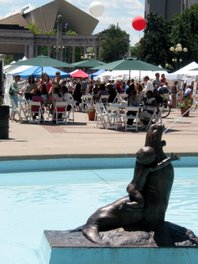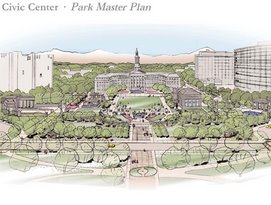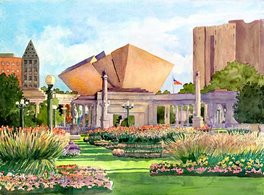For Immediate Release:
October 26, 2006
Contact: Tiffiany Moehring, 720-913-0633
Denver, Co 80202
(
Libeskind was contracted by the Civic Center Conservancy to develop conceptual ideas for revitalizing the park that would inspire public discourse and stimulate community interest and participation in park improvements.
While the Libeskind ideas present some exciting concepts for revitalizing the park, the combination of inspiration, public process and the objectives of the master plan will be the driving force for the parks future, said
The planning ideas that were presented by Daniel Libeskind do not represent final designs but rather are intended as a starting point to inspire the publics imagination beyond ordinary solutions.The purpose is to seek public input to not only to respond to Mr. Libeskinds planning ideas, but also to give park stakeholders and the citizens of
There are two remaining public forum opportunities aimed at gathering citizen input. These meetings are part of a 3-month long series of public meetings regarding the future of
November 15 The Park People Panel Civic Center Renaissance
The public event will be held at the
-John Temple, editor, publisher and president of the Rocky Mountain News, will serve as moderator of the discussion.? Panelists include:
Tina Bishop, landscape architect and partner with Mundus Bishop Design
Kathleen Brooker, President of Historic
Richard Farley, Principal of CIVITAS urban design firm
Kathy Hoeft, architect and historic preservationist
Dennis Humphries, Principal of Humphries Poli Architects
? Dr. Thomas Noel, Professor of History and Director of Public History, Preservation & Colorado Studies at CU-Denver
December 6
The Libeskind ideas have sparked a number of design ideas for the park by local architects and landscape architects. The Civic Center Conservancy will host a presentation of the plans and follow up discussion. Participating presenters include:
Yong Cho
Steve Chucovich
Dave Duclos
Richard Farley
Susan Saarinen
Randle Swan
David Tryba
William Wenk
Public comments will be included in a summary report to the Denver Parks Advisory Committee in January, 2007.? A public announcement will be made when the details of the report presentation is finalized later this year.




